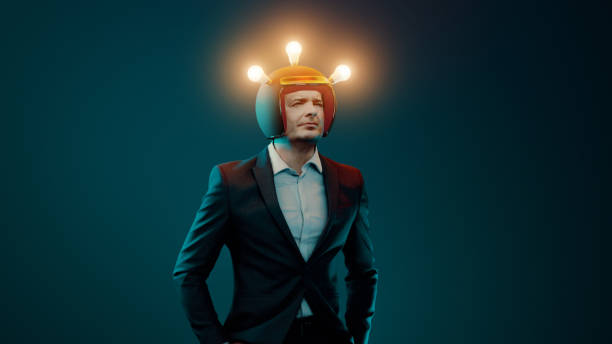Creativity is a fundamental aspect of the human experience, driving innovation, expression, and problem-solving across all aspects of life. However, anyone who has ever pursued a creative endeavor knows that creativity doesn't always flow freely. Creative blocks, self-doubt, and lack of inspiration can hinder our ability to express ourselves and bring our ideas to life. In this blog post, we'll explore strategies for overcoming creative blocks and sparking inspiration, empowering you to unleash your creativity and bring your ideas to fruition.
Understanding Creative Blocks:
Creative blocks are a common phenomenon experienced by artists, writers, musicians, and creators of all kinds. They can manifest as feelings of stagnation, self-doubt, perfectionism, or a lack of motivation. Creative blocks can be triggered by external factors such as stress, fatigue, or criticism, as well as internal factors such as fear of failure or imposter syndrome.
One of the first steps in overcoming creative blocks is recognizing and acknowledging their presence. By understanding the root causes of our creative blocks, we can begin to address them effectively and develop strategies for moving forward.
Strategies for Overcoming Creative Blocks:
1. Embrace Imperfection: Perfectionism is a common barrier to creativity, as the fear of making mistakes or producing subpar work can paralyze our creative process. Instead of striving for perfection, embrace imperfection as a natural part of the creative journey. Allow yourself to make mistakes, experiment, and learn from your failures. Remember that creativity is a process, and every imperfect creation is a stepping stone toward greater mastery.
2. Change Your Environment: Our physical surroundings can have a significant impact on our creativity. If you're feeling stuck, try changing your environment to stimulate new ideas and perspectives. Take a walk in nature, visit a museum or art gallery, or simply rearrange your workspace. Exposure to new stimuli can help break through mental barriers and spark fresh inspiration.
3. Practice Mindfulness: Mindfulness practices such as meditation, deep breathing, and visualization can help quiet the mind and cultivate a state of relaxed awareness conducive to creativity. Set aside time each day to engage in mindfulness exercises, allowing yourself to let go of distractions and tap into your inner creativity. Mindfulness can also help reduce stress and anxiety, which are common contributors to creative blocks.
4. Collaborate with Others: Collaboration can be a powerful catalyst for creativity, as it exposes us to new ideas, perspectives, and approaches. Seek out opportunities to collaborate with other creatives, whether through brainstorming sessions, co-creation projects, or workshops. Engaging in dialogue and sharing ideas with others can help stimulate your own creativity and break through mental barriers.
5. Set Realistic Goals: Setting realistic and achievable goals is essential for maintaining momentum and motivation in your creative pursuits. Break down larger projects into smaller, manageable tasks, and set deadlines to keep yourself accountable. Celebrate your progress along the way, and don't be too hard on yourself if you experience setbacks. Remember that creativity is a journey, and progress is more important than perfection.
Sparking Inspiration:
In addition to overcoming creative blocks, finding inspiration is key to nurturing your creativity and fueling your artistic pursuits. Inspiration can come from many sources, including nature, art, literature, music, and personal experiences. Here are some strategies for sparking inspiration and tapping into your creative potential:
1. Cultivate Curiosity: Approach the world with a sense of curiosity and wonder, seeking out new experiences and ideas wherever you go. Ask questions, explore different perspectives, and challenge your assumptions. Cultivating curiosity opens up new pathways for creativity and keeps your mind engaged and receptive to inspiration.
2. Keep an Idea Journal: Carry a notebook or digital device with you wherever you go to jot down ideas, observations, and inspirations as they come to you. Your idea journal can serve as a repository for creative sparks, allowing you to revisit them later when you're ready to bring them to fruition. Reviewing your idea journal regularly can also help identify patterns and themes that resonate with you creatively.
3. Experiment with Different Mediums: Don't be afraid to step outside of your comfort zone and explore different mediums and artistic techniques. Whether it's painting, writing, photography, or sculpture, experimenting with different forms of expression can help you discover new talents and perspectives. Embrace the process of exploration and discovery, and don't worry about mastering every medium you try.
4. Seek Out Inspiration: Surround yourself with sources of inspiration that resonate with your creative vision and interests. Explore art galleries, attend performances, read books, listen to music, and immerse yourself in the work of other artists and creators. Pay attention to what captures your imagination and stirs your emotions, and use it as fuel for your own creative endeavors.
5. Take Breaks and Rest: Creativity thrives in a relaxed and rejuvenated mind, so don't forget to take breaks and rest when needed. Allow yourself time to recharge your batteries, whether it's through leisure activities, hobbies, or simply doing nothing at all. Sometimes, the best ideas come when we least expect them, so give yourself permission to step away from your work and let inspiration come to you.
Creativity is often seen as a mysterious and elusive quality, but in reality, it's a skill that can be cultivated and nurtured over time. By incorporating creativity-building practices into your daily routine, you can enhance your creative abilities and tap into new reservoirs of inspiration. Here are some additional strategies for fostering creativity and overcoming creative blocks:
6. Embrace Failure: Failure is an inevitable part of the creative process, and learning to embrace it can be liberating. Instead of viewing failure as a setback, reframe it as an opportunity for growth and learning. Each mistake or misstep brings you one step closer to success, so don't let fear of failure hold you back from taking risks and exploring new ideas.
7. Take Risks: Creativity thrives on experimentation and risk-taking, so don't be afraid to step outside of your comfort zone and try something new. Take calculated risks in your creative pursuits, whether it's exploring unconventional ideas, challenging traditional norms, or pushing the boundaries of your own abilities. Remember that some of the greatest breakthroughs in history have come from those willing to take risks and defy the status quo.
8. Practice Divergent Thinking: Divergent thinking is the ability to generate multiple ideas or solutions to a problem, often through brainstorming or free association. Cultivate your divergent thinking skills by engaging in activities that encourage spontaneous, non-linear thinking, such as brainstorming sessions, word association games, or creative writing exercises. The more you practice divergent thinking, the more adept you'll become at generating innovative ideas and perspectives.
9. Seek Feedback and Critique: Sharing your work with others and soliciting feedback can provide valuable insights and perspectives that can help you refine and improve your creative ideas. Seek out constructive criticism from peers, mentors, or trusted advisors, and be open to their suggestions and feedback. Constructive criticism can help you identify blind spots, refine your ideas, and take your creative work to the next level.
10. Foster a Growth Mindset: A growth mindset is the belief that intelligence and abilities can be developed through effort, practice, and perseverance. Cultivate a growth mindset by embracing challenges, persisting in the face of setbacks, and viewing failures as opportunities for learning and growth. Adopting a growth mindset can help you approach creative endeavors with resilience, optimism, and a willingness to learn from your experiences.
11. Practice Self-Care: Creativity flourishes in a healthy and balanced mind and body, so prioritize self-care practices that nourish your physical, mental, and emotional well-being. Make time for activities that bring you joy and relaxation, such as exercise, meditation, hobbies, or spending time in nature. Taking care of yourself not only replenishes your creative energy but also enhances your overall quality of life.
In addition to these strategies, it's essential to recognize that creativity is a dynamic and evolving process that unfolds over time. Just as creativity ebbs and flows, so too does our ability to overcome creative blocks and tap into new sources of inspiration. Be patient with yourself and trust in your creative instincts, knowing that creativity is a journey filled with twists, turns, and unexpected discoveries.
Ultimately, fostering creativity is not just about producing tangible results or achieving external validation; it's about embracing the joy of self-expression and the thrill of discovery. Whether you're an artist, writer, entrepreneur, or simply someone seeking to infuse more creativity into your daily life, remember that creativity is a deeply personal and transformative journey that has the power to enrich your life in countless ways.
By incorporating these strategies into your creative practice and embracing the inherent uncertainty and complexity of the creative process, you can unlock your full creative potential and unleash a world of possibility. So don't be afraid to take risks, embrace failure, and trust in your ability to create something truly remarkable. The world is waiting for your unique voice and vision—let your creativity shine.
Conclusion:
Creativity is a deeply personal and transformative journey that requires patience, perseverance, and a willingness to embrace uncertainty. By understanding the common barriers to creativity and adopting strategies for overcoming them, you can unlock your full creative potential and bring your ideas to life. Remember that creativity is not a destination but a continual process of exploration, discovery, and self-expression. Embrace the journey, trust in your instincts, and never underestimate the power of your imagination to change the world.








